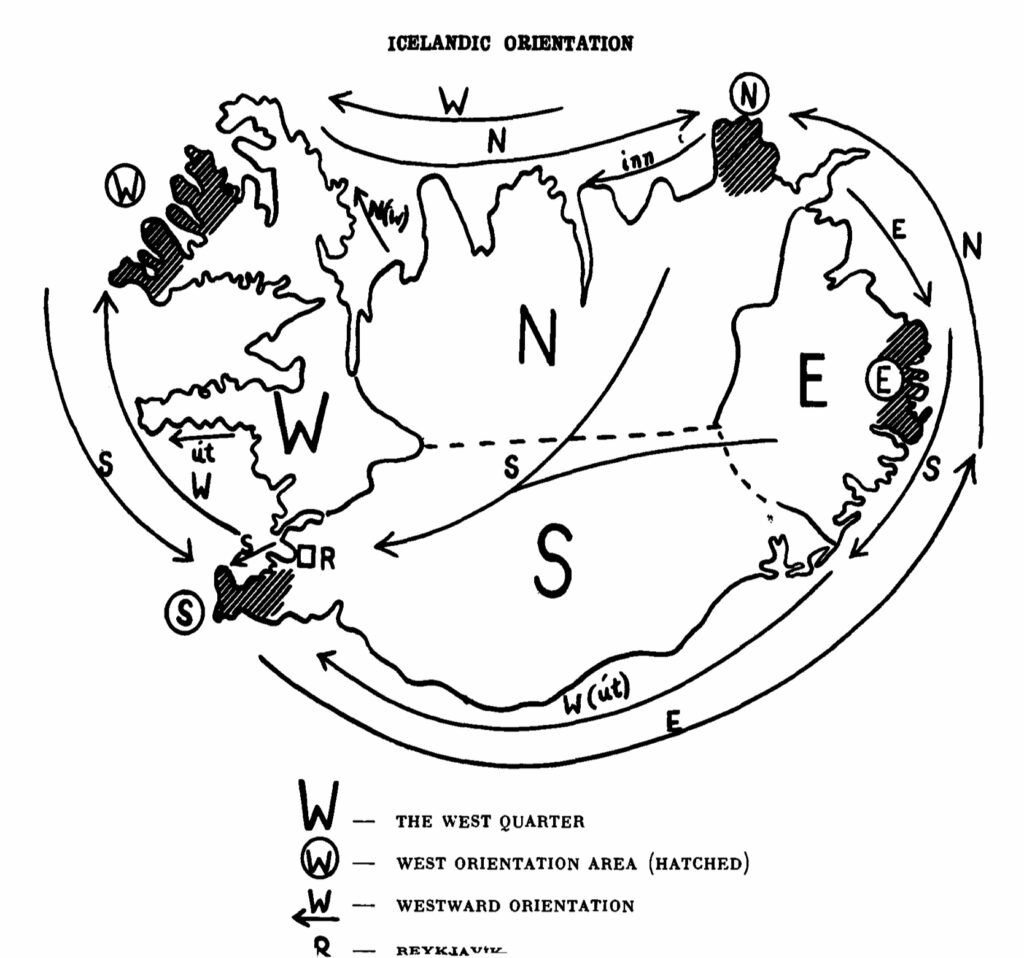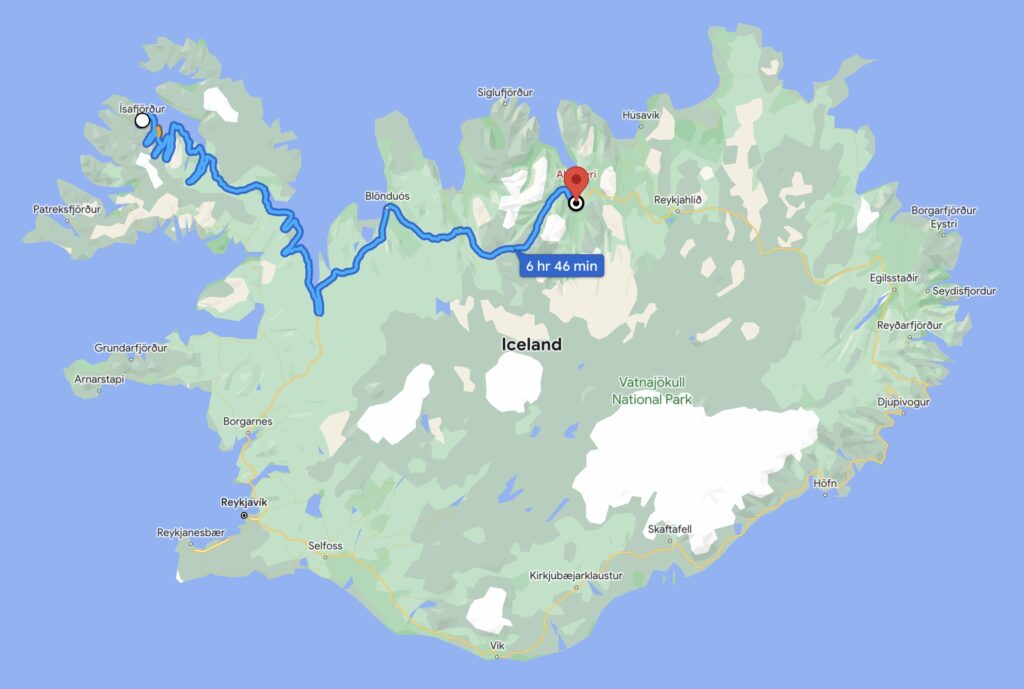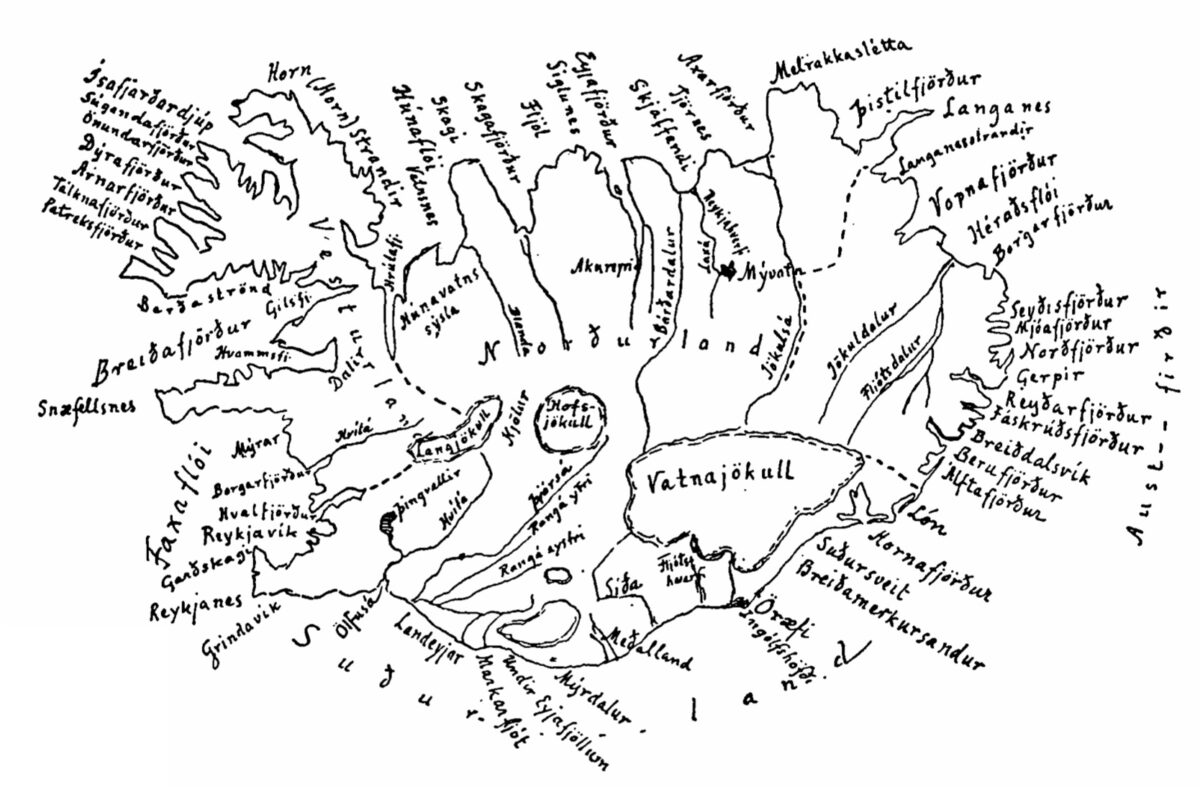Which direction are you heading? In a world of hyper-specific GPS coordinates and turn-by-turn directions, we take it for granted that the cardinal directions of north, south, east, and west are fixed, scientific, and universal. But language, and place, have a way of making words their own. In Iceland, these terms can convey both their common meaning and a place-based understanding that can result in “north” pointing you south.
I’m a big fan of Icelandic television shows like Trapped, The Minister, and Katla. Recently, unwilling to wait for broader distribution, I used a VPN to watch the TV series Blackport about a village in the Westfjords grappling with fishing quotas in the 1980s. It’s a really fun show, based on actual events, and filled with period-appropriate references and archival footage. Something that caught my attention in Blackport was when characters in Reykjavik would use the phrase “up west” to refer to the Westfjords. Coincidently, a footnote in a book I was reading pointed me towards a fascinating 1957 article by Einar Haugen called The Semantics of Icelandic Orientation. The author describes how Icelanders use the universal meaning of cardinal directions on maps, at sea, and in weather reports. But when describing the country’s landscape, these standard terms can have two different meanings.
In Iceland, the linguistic meaning of land-based orientation depends on whether the relationship between two points is “proximate” or “ultimate.” For example, two houses on the same street are proximate to each other, so their orientation is described using the universal meaning of the cardinal directions. The same is true for two rivers, if they can be seen together from a mountain overlook. If one can observe the relationship directly, than the celestial orientation prevails. But for longer distances, describing travel across the country, the “ultimate” orientation is utilized, where cardinal directions refer to the quadrant of the country containing the destination.
“Travel from any point in one quarter to travel into another quarter is described in terms of the goal: E means going to Eastern Iceland.”
Einar Haugen (1957) The Semantics of Icelandic Orientation, WORD, 13:3, 447-459, DOI: 10.1080/00437956.1957.11659646
The terrain of the Icelandic landscape imposes a two-dimensional coastal travel route, with movement through the central highlands atypical and often impossible. There is effectively one main road that rings the country. While the route along that path might twist and turn to traverse fjords and mountains, “anyone travelling along the line could say he was going in the direction of the next quarter until he actually arrives in that quarter.” This also means that unlike proximate orientation, ultimate orientation is strictly singular — always “north” not “north east.”

By this logic, if you are in Reykjavik and tell a friend you are heading “west” then you are probably not going to the airport in Keflavik, which is located southwest of the capital on the Reykjanes peninsula. Instead, you’re headed due north, towards the western region of the country. And if you’re in Ísafjörður, in the Westfjords, and planning a trip to Akureyri, you would say that you are heading “north” despite the fact that on a map your destination is southeast of your origin.

The logic feels simple enough, once you internalize the landscape, but it does leave open with the question — how does one describe going to the airport? Keflavik sits in what the author describes as an “orientation area” (see hatched sections on the black & white map above), and each quadrant has a similar peninsula or fjords where the terminology differs. People say they are going “in” or “out” of these areas, linguistically treating them as a kind of spur trail that connects into the main loop.
In researching this post I also learned that the Sami language has varied and unique meanings for cardinal directions. In a linguistics dissertation by Anikó Nikolett Tóth the following diagram is shown, indicating the various orientations denoted by the Sami word “nuorta” in different dialects. The paper notes how these varied understandings relate to changes in geography, in particular the flow of rivers.

